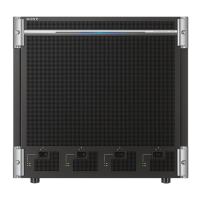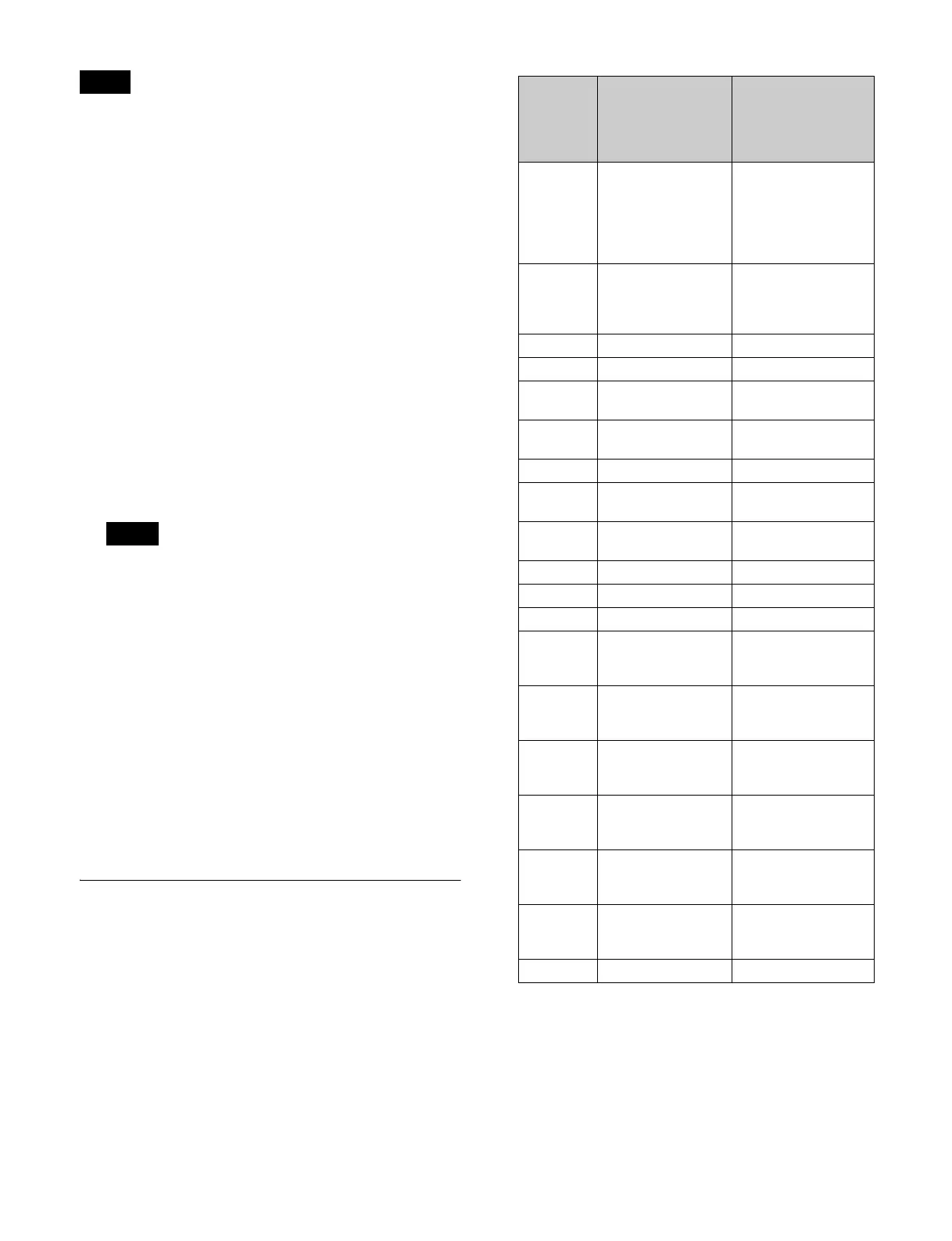268
• Recording is not possible if the VTR or disk recorder is
not set to Recorder.
• The disk recorder type must be specified to use the video
disk communications protocol (see page 424).
• When using a disk recorder, recording is not possible
unless a new file name is specified.
For details about file name settings, see “Creating new
files” (page 274).
• Recording is not possible when using the Odetics
protocol.
1
Use the channel selection buttons of the device control
block to select the VTR or disk recorder to which you
want to record.
You can select more than one button.
2
Holding down the [REC] button, press the [PLAY]
button.
Recording starts. During recording, the [REC] button
lights red and the [PLAY] button lights amber.
Note the following points about recording to a disk
recorder.
• The maximum length of time that can be recorded in
one operation is 30 minutes.
• If you want to record to a different file than the file
used in the previous recording, use the Device
>DDR/VTR >File List menu (5333) to create a new
file.
• If you resume recording without executing [Unload]
from the Device >DDR/VTR >File List menu
(5333), recording starts at the position in the same
file where recording was interrupted.
To stop recording
Press the [STOP] button or the [ALL STOP] button in the
device control block.
Displaying VTR/Disk Recorder/
Extended VTR Information
You can check the following information in the Device
>DDR/VTR >Cueup & Play menu (5331).
DEV (device name): DEV1 to DEV12 represent
respectively device 1 to device 12.
Reg (register): Number of the register to which settings
apply.
Status: Status of each device.
a) Not supported for Extended VTR.
b) Not supported for the Odetics protocol.
Current: Shows timecode for current device position.
Start TC: Shows timecode for start point set on device.
Stop TC: Shows timecode for stop point set on device.
Variable: Shows the variable speed set for each device.
Delay: Shows start delay time set on device.
Notes
Note
Operating
status
display
When VTR is used When video disk
communications
protocol, Extended
VTR, or Odetics
protocol is used
XXXX Communications
with the device are
being carried out
normally, but status
information is not
received.
Not communicating.
Or communicating
but the device type
cannot be read.
Local The REMOTE/
LOCAL switch of
the device is set to
LOCAL.
Port is not open.
Tape Out No tape is loaded. No file loaded.
b)
Rec Recording. Recording.
a) b)
Cue> Cueing up in the
forward direction.
–
Cue< Cueing up in the
reverse direction.
–
Eject Ejecting cassette. –
Stb Off Stopped in standby
off mode.
–
Stop Stopped in standby
on mode.
Stopped.
Play Playing. Playing.
FF Fast forwarding. –
Rewind Rewinding. –
Shtl> Playing in the
forward direction in
shuttle mode.
–
Shtl< Playing in the
reverse direction in
shuttle mode.
–
Var> Playing in the
forward direction in
variable mode.
Playing in the
forward direction in
variable mode.
Var< Playing in the
reverse direction in
variable mode.
Playing in the reverse
direction in variable
mode.
Jog> Playing in the
forward direction in
jog mode.
Playing in the
forward direction in
jog mode.
Jog< Playing in the
reverse direction in
jog mode.
Playing in the reverse
direction in jog mode.
Still Playing still image. –

